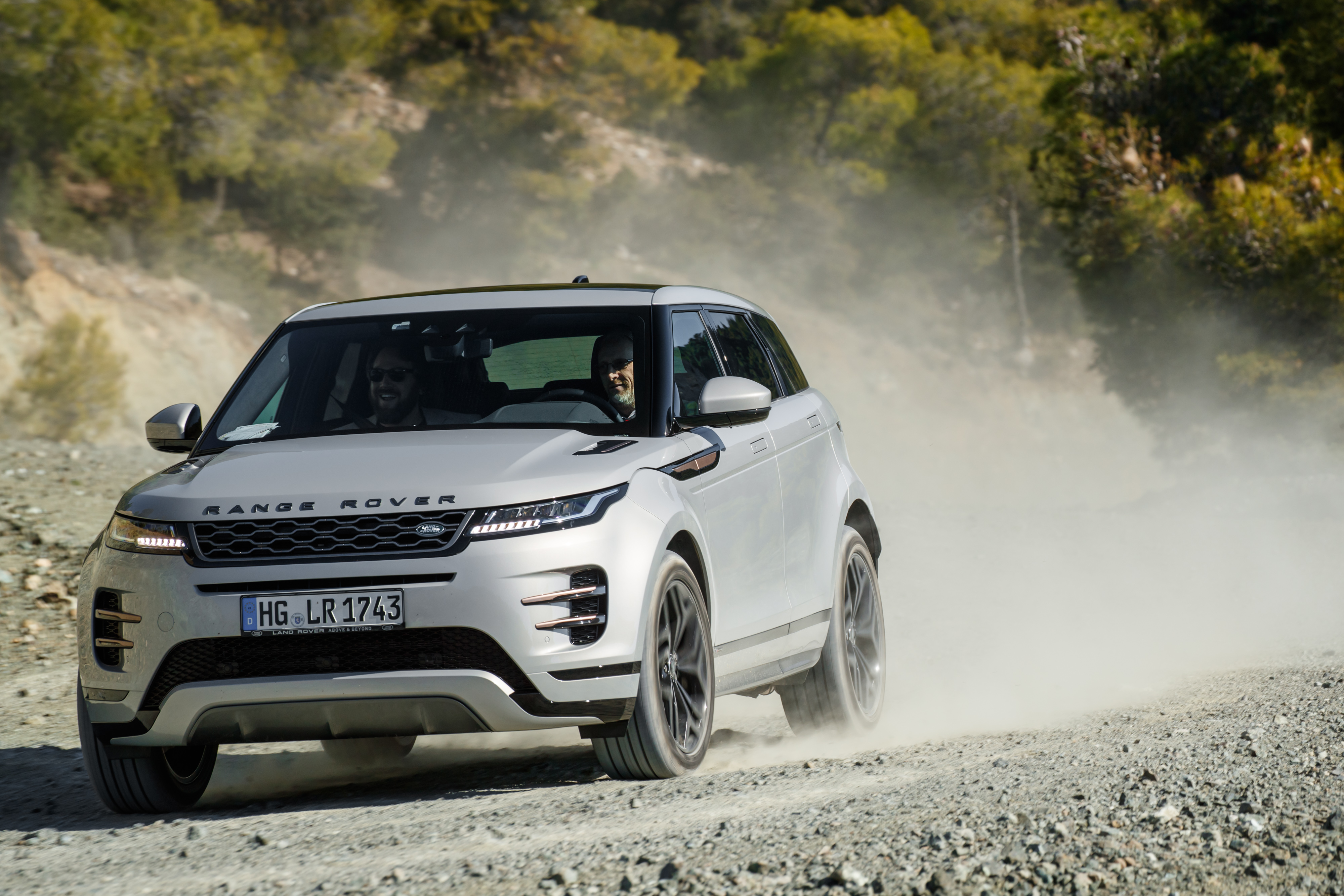The 2020 Range Rover Evoque – To Call Forth
A crossover SUV was never meant to be a truck; they have been designed to be a far more capable and usable car, and in some cases like the Evoque, a great car with the backroad performance that exceeds some traditional SUVs. This is not an attempt at suggesting that the Evoque replaces the Discovery for the overlander, but many travelers have long commutes or live in congested cities, and this compact Range Rover may be the best choice for their needs. The Evoque has also been wildly popular worldwide, accounting for one quarter of all Land Rover sales and hundreds of thousands of units. They sell almost the same number of the Evoque in China as they do in the US, and over 50,000 units per year in Europe. On my recent trip to Italy and Greece, they were everywhere. This model even hits close to home at Overland International, as our designer and president (Stephanie Brady) drove one for over three years. So, why would Expedition Portal review the Evoque? Principally, because it is from a trusted brand that specifically designs all of their vehicles to have segment-leading, off-road performance. We have also found that an increasing number of travelers are using crossover platforms for overland adventures.
Evoque: From the Latin ēvocare, first-person singular preterite evoqué. To conjure, to evoke.
1 : to call forth or up: such as. To bring to mind or recollection; this place evokes memories.
The Evoque has always been a compact, crossover utility vehicle (CUV) with an emphasis on design and performance, while still delivering respectable fuel economy and the Land Rover promise of all-road capability. Our testing of the MKI Evoque started back in 2011 with Matt Scott reviewing the vehicle and then in 2015 when our designer purchased a lightly used unit from Land Rover Las Vegas. Matt and Stephanie both sang the vehicle’s praises, but I was unsure. Fast forward to 2019 and the launch of the 2020 MKII model, which was almost 100 percent new, yet remained visually familiar. I landed in Athens, Greece, and spent a few days exploring the city before the rest of the media cadre arrived. This adjusted my jetlag, and I felt well rested to assess the newest Range Rover. Fortunately, Matt Scott was also attending (for Outside Online), and we paired in the same vehicle, just outside of the watchful eye of the organizers. To say we had fun would be a massive understatement, and the Evoque was a big part of the festivities, an eager participant on the beautiful and curving coastal roads of southern Greece. I pushed the CUV hard on both pavement and dirt and discovered the following results.
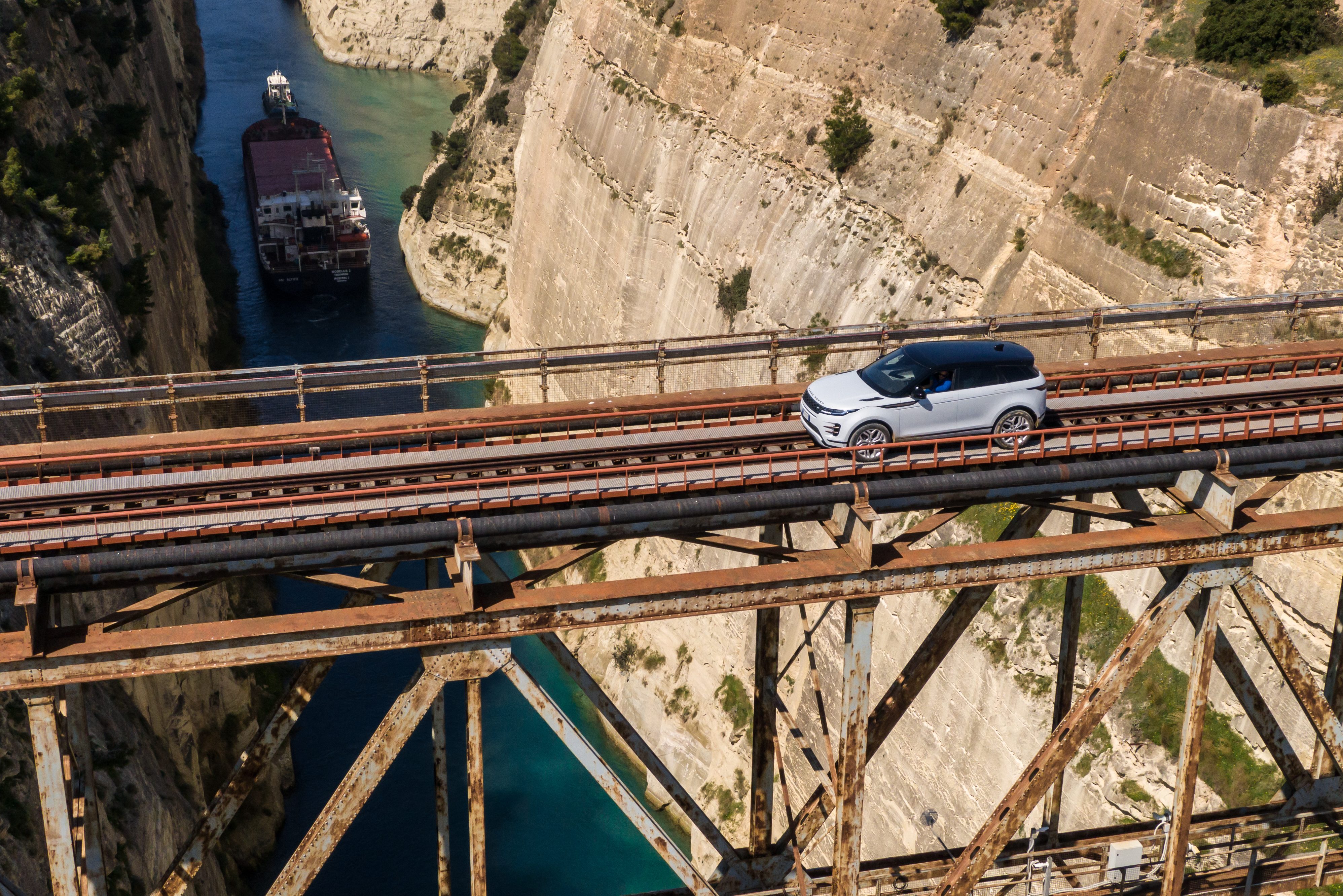

–
On the Road
Any Range Rover should be a pleasure to pilot on pavement, consuming miles with brand-honoring aplomb. Road noise was noticeably lower on the new model, and steering feel was excellent, a major improvement in tuning and weighting, particularly on center. While it is quite direct (i.e., sporty), the steering never contributed to driver fatigue. I also appreciated that minimal steering wheel main shaft angle was required to carve through corners, even tight switchbacks. There was no need to shift hand position, and the weighting inspired confidence and a predictable return to center. Just aft of the wheel are two paddle shifters, the left for downshifts and the right for upshifts. While it is not a sequential transmission, it does allow for gear holding and manual selection of the 9-speed ZF automatic. The 2.0-liter, turbocharged I4 is eager under heavy acceleration, and the turbo spools quickly, producing a 7-second, 0-60 run with the non-hybrid variant, and a 6.3 time for the mild hybrid. It feels faster than these numbers indicate, particularly when gear holding with the paddles. I found the Evoque to exhibit excellent grip on twisting roads with only mild understeer. The vehicle (like most performance-oriented SUVs) benefited from late braking and late apex to take advantage of setting the front end and the AWD drivetrain.
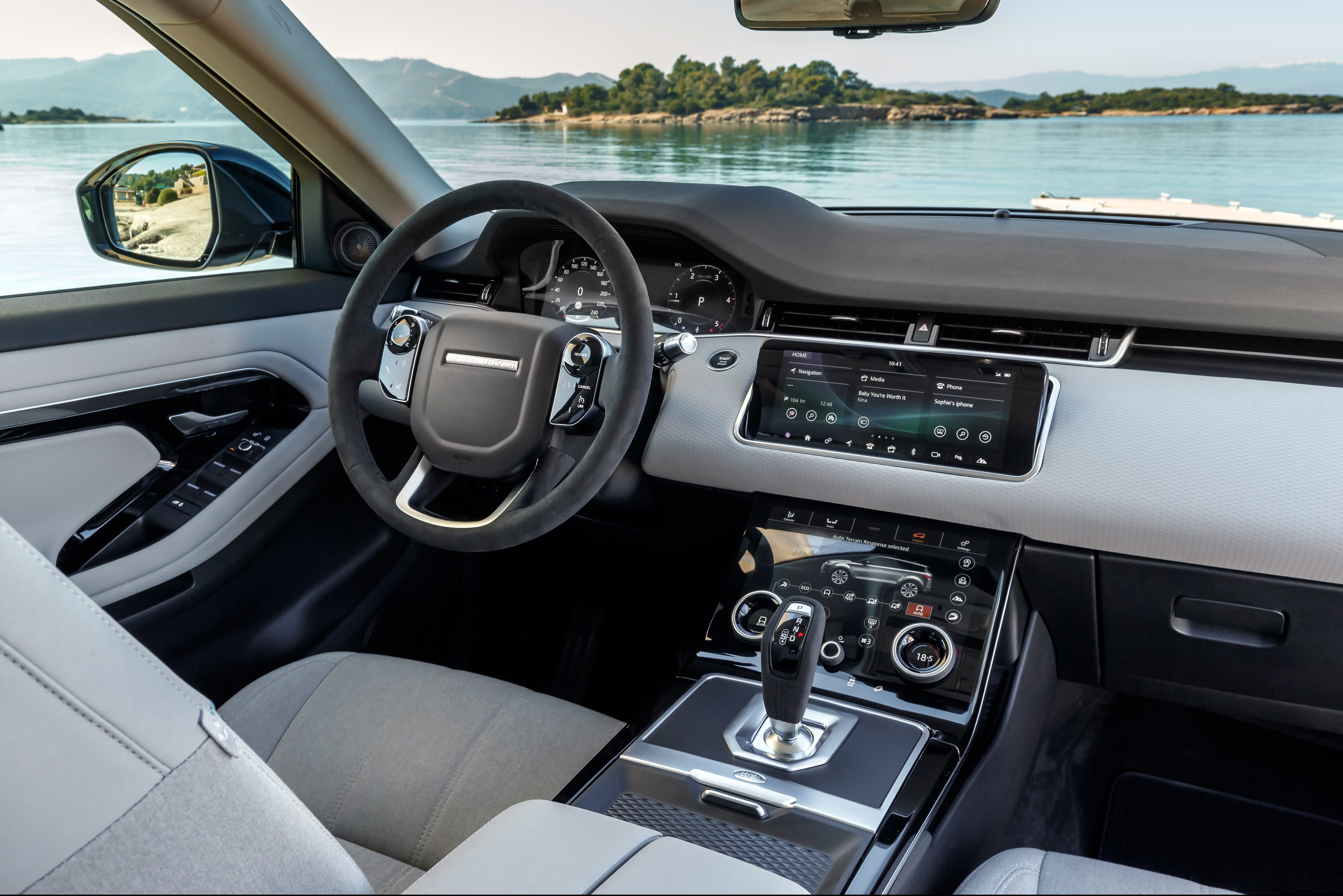
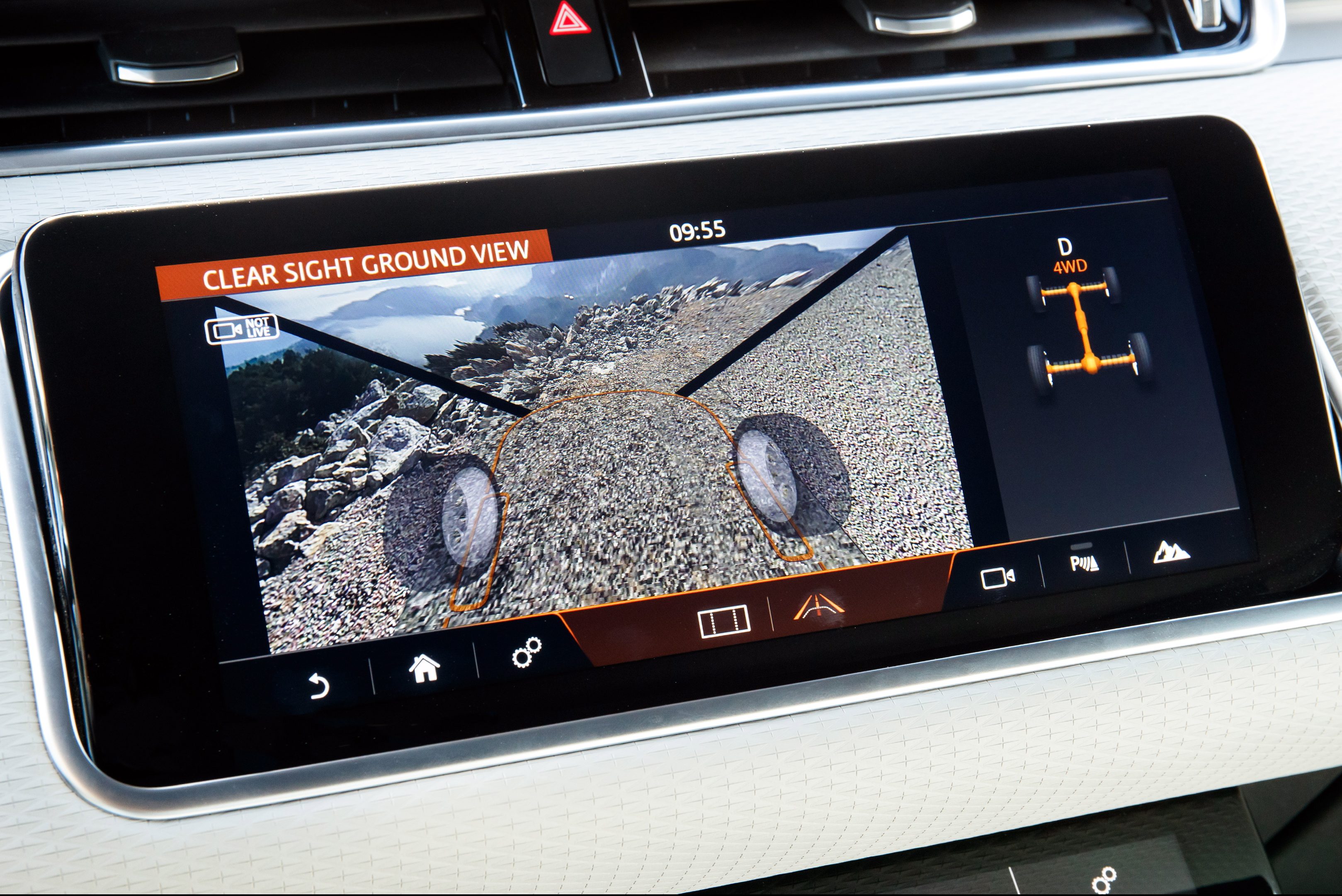
–
Relaxed driving and cruising were comfortable for the driver and passenger, the dash open and clean, clutter managed by a large LCD screen and easy to access switchgear. Noise, vibration, and harshness were well-controlled by the thick carpet and raked windshield. The ride was well-dampened but can get busy on broken pavement, a reflection of the stiffer spring rates and shock valving, combined with the limited compression travel. Not a big body Range Rover in overall comfort, but easy to spend the day behind the wheel. Comfort for rear passengers is less luxurious and rewarding, mostly due to the limited visibility and sense of being closed in by the sloping roofline and diminutive rear windows. The new Clearview rearview mirror is something to behold and one of the most impressive new technologies I have experienced as a test driver.
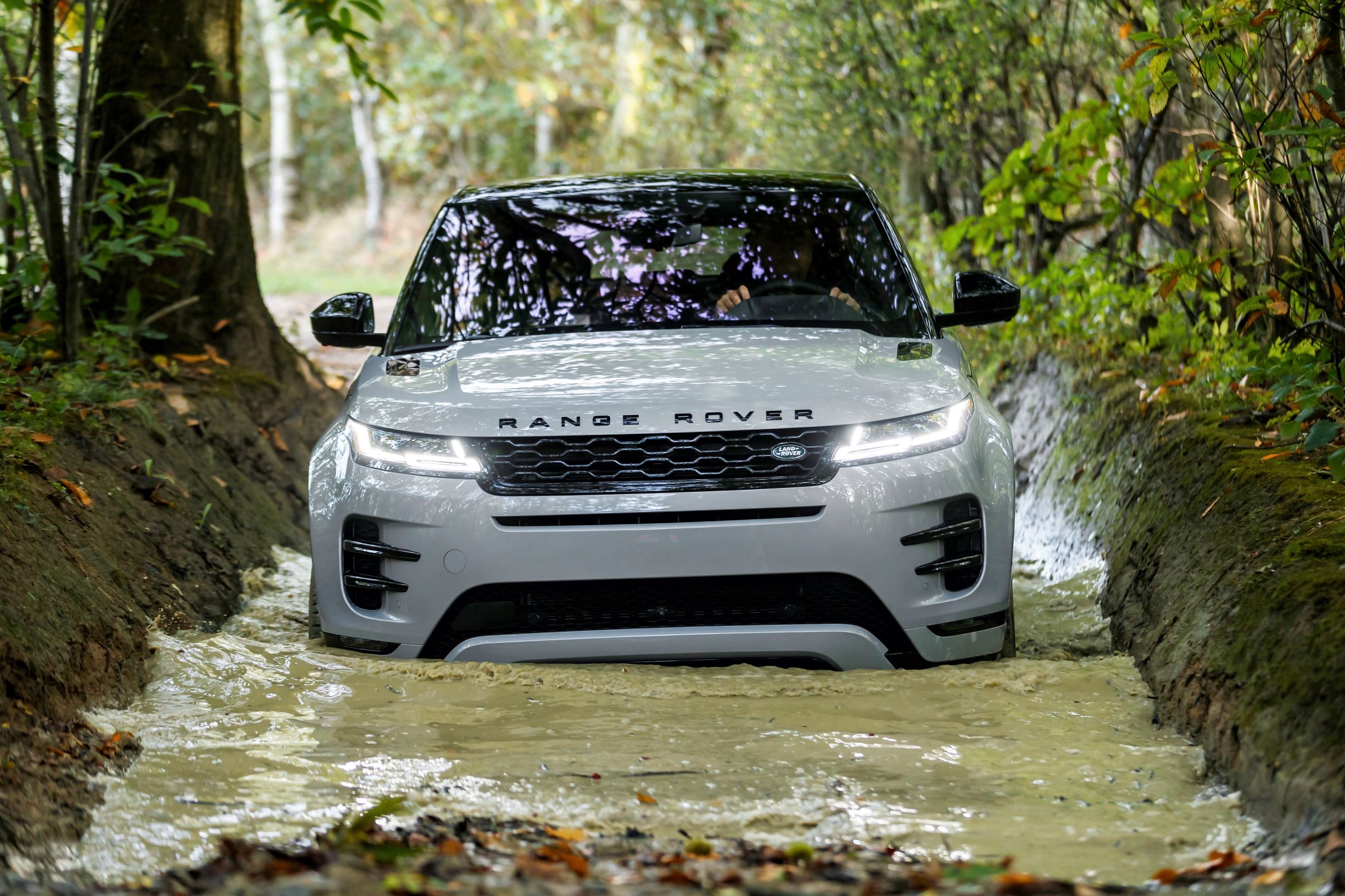
As an Overlander
I am not going to pretend that the Evoque is a Defender on the trail or the best choice to load with gear for a trip around the world, but it does do a better job of backcountry travel than most CUVs. In particular, the vehicle can be specified with 18-inch wheels and taller profile tires, which increase puncture resistance and actually allows for some airing down. This new model also comes standard with Terrain Response 2 (with five driving modes: (General, ECO, Sand, Grass-GravelSnow, and Mud and Ruts) and an electronically controlled torque on demand rear axle. This is complemented by hill descent control, hill hold control, and now crawl control. I tested all of these systems on mixed terrain and with a wide range of traction surfaces from sand and mud, to loamy soil and gravel. Ground clearance is a respectable 8.3 inches, approach and departure angles are 25 and 30.6 degrees respectively, which will cause more than a few “overlandy” stalwarts to blush (a 200 Series Land Cruiser has 8.9 inches of ground clearance and a 24-degree departure angle). Slow speed control was also better than expected because of the 4.7:1 first gear and final drive (axle) ratio of 4.54:1. Maximum torque of 269 pound-feet is also available as low as 1,300 rpm. This is not a replacement for proper low range gearing but is impressive for a CUV.
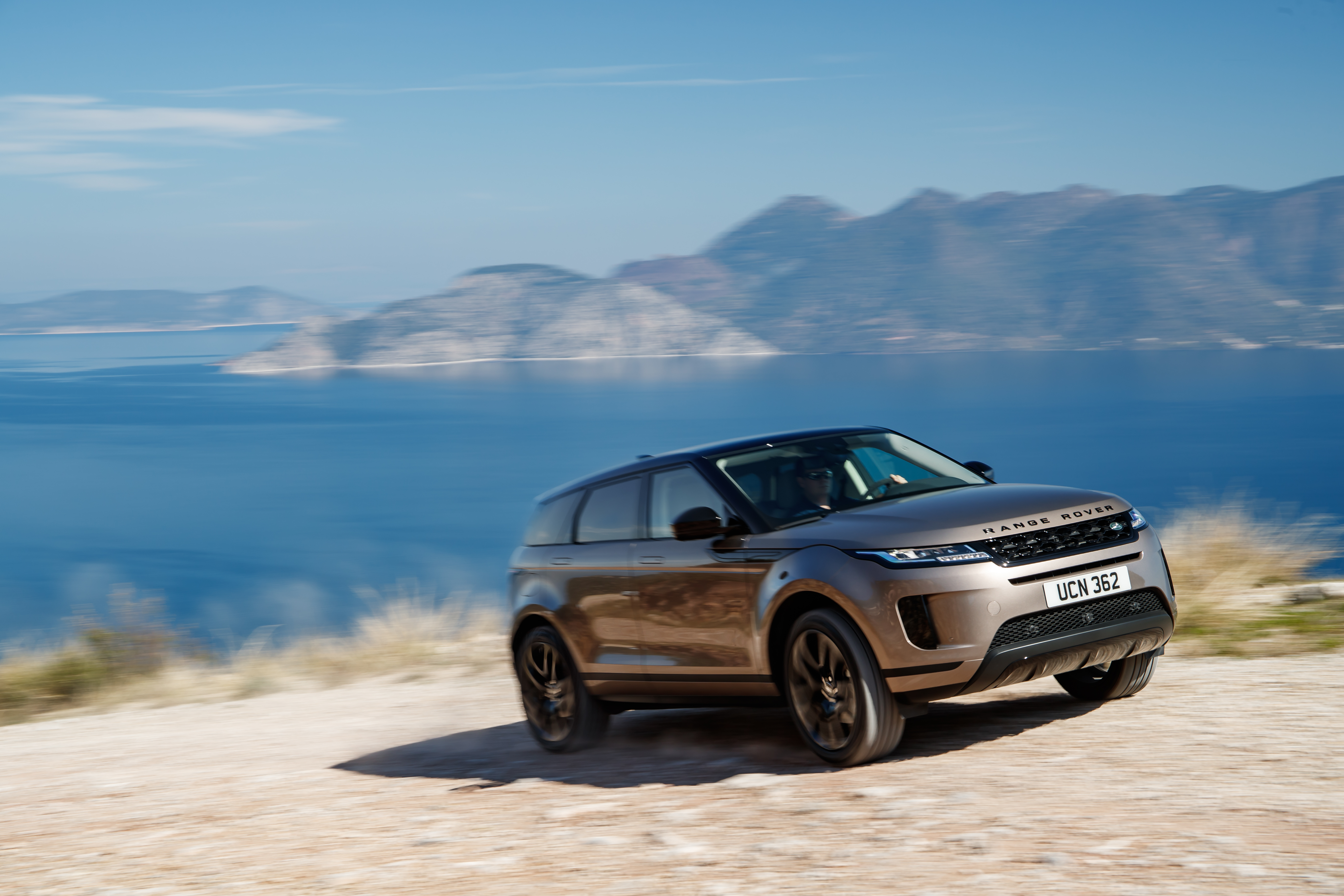
The Evoque was the most fun on the dirt at speed, performing more like a rally car than a crossover, the suspension effectively damping smaller track variations and even the occasional larger events with no hard bottoming. The durability of the tire will be the only real limit for big smiles on wide gravel roads. With the more technical obstacles, a spotter is mandatory, although the new 360-degree camera systems really do help. The cameras can even measure fording depth using ultrasonic sensors and display the water measurement on the central touchscreen (the fording depth of nearly 2 feet is only 4 inches less than the 200 Land Cruiser). The suspension that is fun on the pavement does limit articulation on the dirt, so the traction control needs to work overtime when tires are (well) in the air.
Overall, the Evoque is a stylish crossover with far better dirt performance than most CUVs. It will be popular with those who commute in the cities or just want the economy, value, and performance of a crossover, but still enjoy occasional dirt forays. It is also entirely suitable for loading up with camping gear and driving the Mojave Road on the weekend. Just pack a good compressor and tire repair kit. It is easy to dismiss crossover SUVs out of hand for the overlander, but they often meet the needs of some travelers and at a lower overall purchase price and cost of operation. I still remember being in the middle of Mongolia hundreds of miles from the nearest city, with a traditional SUV, only to be passed on the grassy steeps by a local in a crossover.
Pros
Excellent off-highway performance for a crossover
Fun to drive at speed on dirt and pavement
Packed with useful technology
20 percent more payload capacity than a Tacoma (and Toyota should be ashamed of that)
More payload and towing capacity than a Jeep Wrangler (gasp!)
Cons
Limited interior space aft of the driver
Passenger-rated tires easily punctured
Limited ground clearance at the quarter panels
